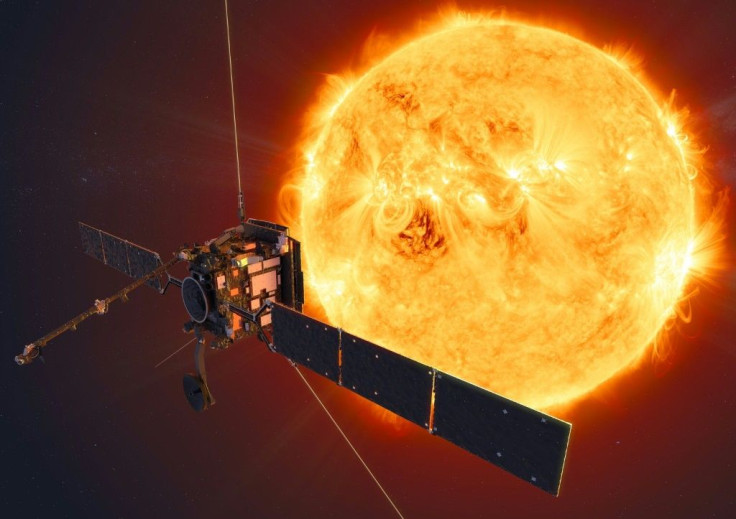Solar Orbiter Captures 'Solar Snake' Slithering Across Sun's Surface [Watch]
KEY POINTS
- The Solar Orbiter captured the "solar snake" last September
- It was actually cool plasma moving through the Sun's magnetic field
- Later on, an eruption ejected "billions of tons of plasma into space"
A stunning new video captured by the Solar Orbiter shows a "solar snake" slithering through the surface of the Sun.
The footage shows a time-lapse of the images that were captured by the Extreme Ultraviolet Imager on the Solar Orbiter on Sept. 5, the European Space Agency (ESA) noted in a release. At the time, the spacecraft was moving in for a close pass in October.
In the video shared by the ESA, one can see the "solar snake" erupt from a bright portion of the Sun, then slither its way through the surface from one side to the other. While the video showed the event in a quick movement, the event actually took about three hours.
Spot the solar snake slithering across the surface of the #Sun! 🐍
— ESA's Solar Orbiter (@ESASolarOrbiter) November 14, 2022
This ‘tube’ of cooler atmospheric gases snaking its way through the Sun’s magnetic field was captured by @EuiTelescope on 5 September, and was precursor to a large eruption 💥
📹 https://t.co/y3qkLX2hc1 pic.twitter.com/bSmnBtFnb7
So, what caused the so-called solar snake? It was actually a "tube" of cool plasma that was making its way through the Sun's magnetic field.
"You're getting plasma flowing from one side to the other but the magnetic field is really twisted," explained David Long, of Mullard Space Science Laboratory. "So you're getting this change in direction because we're looking down on a twisted structure."
Later on, the active region from where it began erupted into "one of the most intense solar energetic particles events" detected by the Orbiter's Energetic Particle Detector, ejecting "billions of tons of plasma into space." This points to the possibility that the event is actually a "precursor" to the eruption, the ESA noted.
The solar snake adds to the "zoo of features" captured by the Solar Orbiter. Previously, for instance, it captured a tardigrade-shaped object, as well as a phenomenon called "solar campfires."
Only recently, the Solar Orbiter celebrated its 1,000th day in space since its launch in February 2020. To mark the event, the ESA shared a stunning hi-resolution video captured by the spacecraft.
Happy #SUNday! 😎
— ESA's Solar Orbiter (@ESASolarOrbiter) November 6, 2022
Fun fact: it’s 1000 days since #SolarOrbiter launched! 🚀
This is one of our highest res movies ever taken of the #Sun’s constantly moving atmosphere. The view measures 17 Earths across.
👉https://t.co/RZXR0P0Dyb #ExploreFarther #WeAreAllSolarOrbiters pic.twitter.com/2hPahgdsGt
The mesmerizing footage shows what appears to be a patch of the Sun's corona, but each pixel actually spans 105 kilometers (65 miles) of the star's surface. With 2,048 pixels across, this means that the image could actually fit 17 Earths side-by-side.

© Copyright IBTimes 2024. All rights reserved.






















